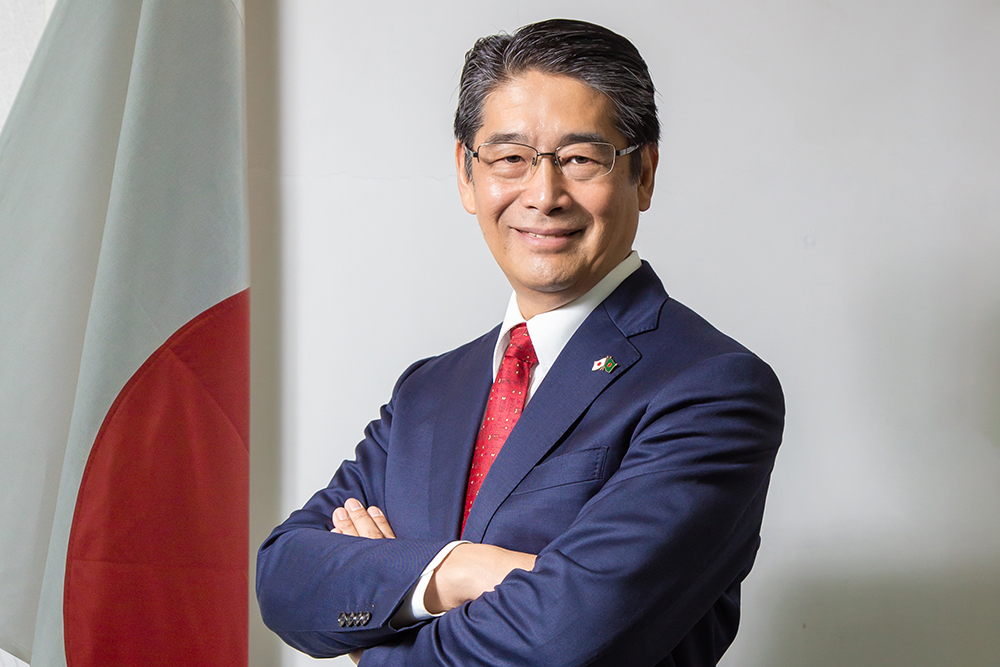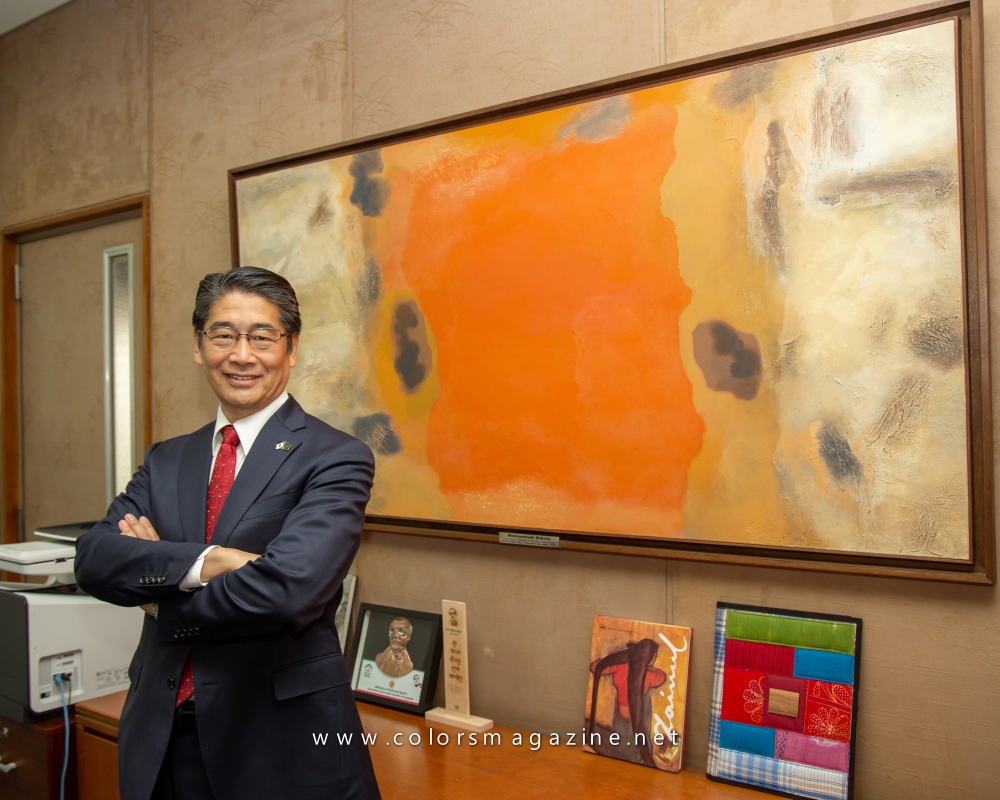Blossoming Growth
The Bangladesh-Japan relationship has been growing and is set to grow even further. With special economic zones being developed in Araihazar, Japan will be investing$1 billion alone in this economic zone. COLORS Business’ Advisory Editor Ziaul Karim and Assistant Editor Arka Dev Biswas speak to the Japanese Ambassador ITO Naoki on how the growth of Japanese presence will help Bangladesh

JAPANESE FDI IN BANGLADESH
The US Roadshow 2021 envisions creating Bangladesh as an attractive proposition to invest in. From Bangladesh’s growth trends, future projections, and development ambitions, the roadshow focused on raking in more FDI for various sectors. A bright light in all of this has been the land of the rising sun. Japan has had a presence from the get-go. Foundations were laid from Bangabandhu’s visit in October of 1973. Another milestone was the reciprocal visits by the Prime Ministers in 2014 “These visits were fundamental in terms of forging a business partnership between the two nations. We emphasize the enhanced connectivity of Bangladesh so much.” The notion of connectivity has been ingrained in Japanese philosophy, Naoki highlights. Translating such principles into Bangladesh and building up the infrastructure is what Japan is pushing for. The strategic location of Bangladesh puts the nation in a unique position to utilize the resources that are being allocated. “The Tokyo and Osaka highway connectivity and industrial belt helped to elevate the growth for the two areas. These two became the heart of industrialization. The belief is to emulate the success of Japan’s growth for Bangladesh.” The industrialization of Japan was enabled by increased connectivity. As Bangladesh develops into a hub of industrialization, it would be able to attract bigger FDIs.
BUILDING BLOCKS FOR BANGLADESH
Naoki identifies Matarbari and Araihazar as key elements to Bangladesh’s growth. As soon as Matarbari port starts operation, it would transform Bangladesh into the center of trade between South Asia and South-East Asia. “As much as Matarbari is important, the success of Araihazar in Narayanganj would open more doors of opportunity, and we are awaiting that.” These expectations are understandable. Making Bangladesh the highest Japanese investment recipient has its caveats. With Honda, Mitsubishi, and other companies entering the Bangladesh market, these would pave the future for Japan in Bangladesh. The Bay of Bengal Industrial Growth Belt or BIG B is built on the vision that it would accelerate the development along with Dhaka, Chattogram, and Cox’s Bazar. Matarbari falls in the line of development where its completion would have stages of development in the form of power terminals, LPG terminals, and other energy-related terminals. This would transform Matarbari into an energy and connectivity hub. The development of energy, logistics, and improvement would make Matarbari the value chain hub for South Asia and Southeast Asia. Naoki believes these would allow developments in Bangladesh, and place Bangladesh in the heart of Asian development.
The infrastructure developments, expansion of the airport, and completion of mega projects will catalyze the growth potential of Bangladesh. As per statistics, it is estimated that daily 3 million people would be using the metro rail, affecting various costs on micro and macro levels. An increase in productive output and reduced loss in time elapsed in commuting would be the key ripple effects from the metro completion.
Another facet that needs to be improved is the ease of licensing, reduced red tapes and setting up businesses. The pandemic has allowed the relaxation of these caveats and the future looks positive. “Asian countries have seen significant growth due to the growth of vehicle production taking place. Mitsubishi plans to execute the same narrative in Bangladesh. Producing domestically in Bangladesh and creating a change in the Bangladeshi vehicle market.” Naoki believes that the customs clearance and time delays stemming from clearance hinders trade for Bangladesh. A change in mindset, documentation, and streamlining of the procedure would allow a trade to be better. Renewal of licensing is also an issue that Naoki believes has to be changed, as it accrues cost for institutions. These repeated instances of licensing lead to institutions unwilling to continue, especially foreign institutions who want the culture of speed money to die away.

BETTER BI-LATERAL FUTURE
The consumer market for Bangladesh is a place where Japan wants to explore. Naoki suggests that Bangladesh should have patience when it comes to its expansion, as it must be a step-by-step growth. Japan will be investing in the domestic market and the ready-made garment industry in the future, given that circumstances are favorable in the long run. Even Araihazar is on pause as the world is still grappling with unfavorable economic growth due to the coronavirus pandemic, even if Bangladesh may be performing relatively better than other nations. The future of Araihazar comes back to how every other nation sees the development of it. Success stories are contingent on how Araihazar performs, how Mirsarai performs, how Matarbari performs, and lives up to expectations, as Naoki sees. Investments would only flow in when resources are utilized better, and the connection of Dhaka-Chattagram-Cox’s Bazar allows industrial growth. From an economic lens, these projects would elevate the GDP per capita, enable a diversified export and import portfolio, create jobs, and a multi-faceted growth across the board.
Education and student exchange programs are also important aspects for growing the human capital resource in hand. “There hasn’t been significant investment in education, rather small-scale investments. However, we expect to do more in terms of upskilling the population in Bangladesh by promoting the flow of Bangladeshi students in Japan. Making them skilled in terms of the areas that Japan wants the future generation to concentrate on. It has to be a win-win situation for those involved, that leads to a mutually beneficial situation.” There must be a systemic approach to skilling individuals in Bangladesh, through training and mobilizing resources. Only then Bangladesh can attain the growth ambition it envisions.
The Japanese Ambassador sees a bright future for the relationship between Japan and Bangladesh. The pillars have only galvanized the prospects, and now the current and future generations will be reaping the benefits. The BIG B belt is simply the step that accelerates all the visions that the leaders foresaw, and Naoki is eager to see the success of all the projects in which JICA and Japanese companies are involved


